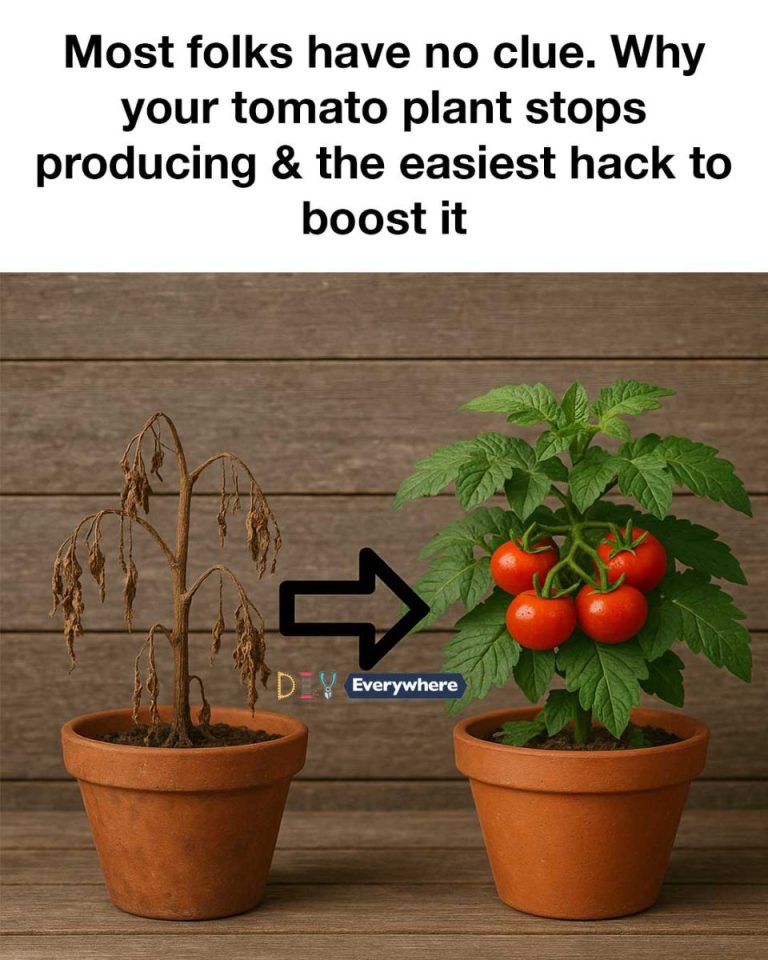ADVERTISEMENT
Tomatoes are one of the most popular plants for home gardeners, offering a bounty of delicious fruits that can be used in a variety of dishes. However, many gardeners face the frustrating issue of their tomato plants suddenly stopping production. Understanding why this happens and how to address it can make the difference between a bountiful harvest and a disappointing one.
In this article, we’ll explore the various factors that can lead to reduced tomato production and provide practical solutions to boost your plant’s yield. From understanding growth cycles to managing pests and diseases, you’ll learn everything you need to know to keep your tomato plants thriving.
1. Understanding Tomato Plant Growth Cycles
Tomato plants have a distinct growth cycle that includes germination, vegetative growth, flowering, fruiting, and eventually, senescence. Each stage requires specific conditions to ensure healthy development. For instance, during the vegetative stage, which lasts about 4-6 weeks, the plant focuses on developing strong roots and foliage.
As the plant transitions to the flowering stage, which typically occurs 6-8 weeks after planting, it requires more phosphorus to support flower development. Understanding these stages helps gardeners provide the right care at the right time, ensuring a continuous supply of tomatoes.
2. Common Reasons for Reduced Tomato Production
Several factors can contribute to a decline in tomato production. One common reason is inadequate pollination, which can occur if there are not enough pollinators like bees in the area. Another issue is environmental stress, such as extreme temperatures or inconsistent watering, which can cause flowers to drop before setting fruit.
Nutrient deficiencies, particularly in nitrogen, phosphorus, and potassium, can also lead to reduced yields. It’s essential to regularly test soil and amend it with the necessary nutrients to support healthy plant growth.
3. The Role of Temperature in Flowering and Fruiting
Tomato plants are sensitive to temperature, and both high and low extremes can affect their ability to flower and fruit. Optimal temperatures for tomato production are between 70°F and 85°F during the day and 55°F to 70°F at night. Temperatures above 90°F can cause flowers to drop, while temperatures below 55°F can inhibit fruit set.
To mitigate temperature-related issues, consider using shade cloths during heatwaves or row covers during cooler nights. These simple measures can help maintain a stable environment for your plants.
4. Importance of Proper Watering Techniques
Consistent watering is crucial for tomato plants, as both overwatering and underwatering can lead to problems. Tomato plants generally require about 1-2 inches of water per week, depending on weather conditions. It’s best to water deeply and infrequently to encourage deep root growth.
Mulching around the base of the plant can help retain soil moisture and reduce evaporation. Additionally, watering in the early morning allows the plant to absorb moisture before the heat of the day sets in, reducing the risk of fungal diseases.
5. Nutrient Deficiencies and Their Impact on Yield
SEE NEXT PAGE
ADVERTISEMENT
Pages: 1 2
